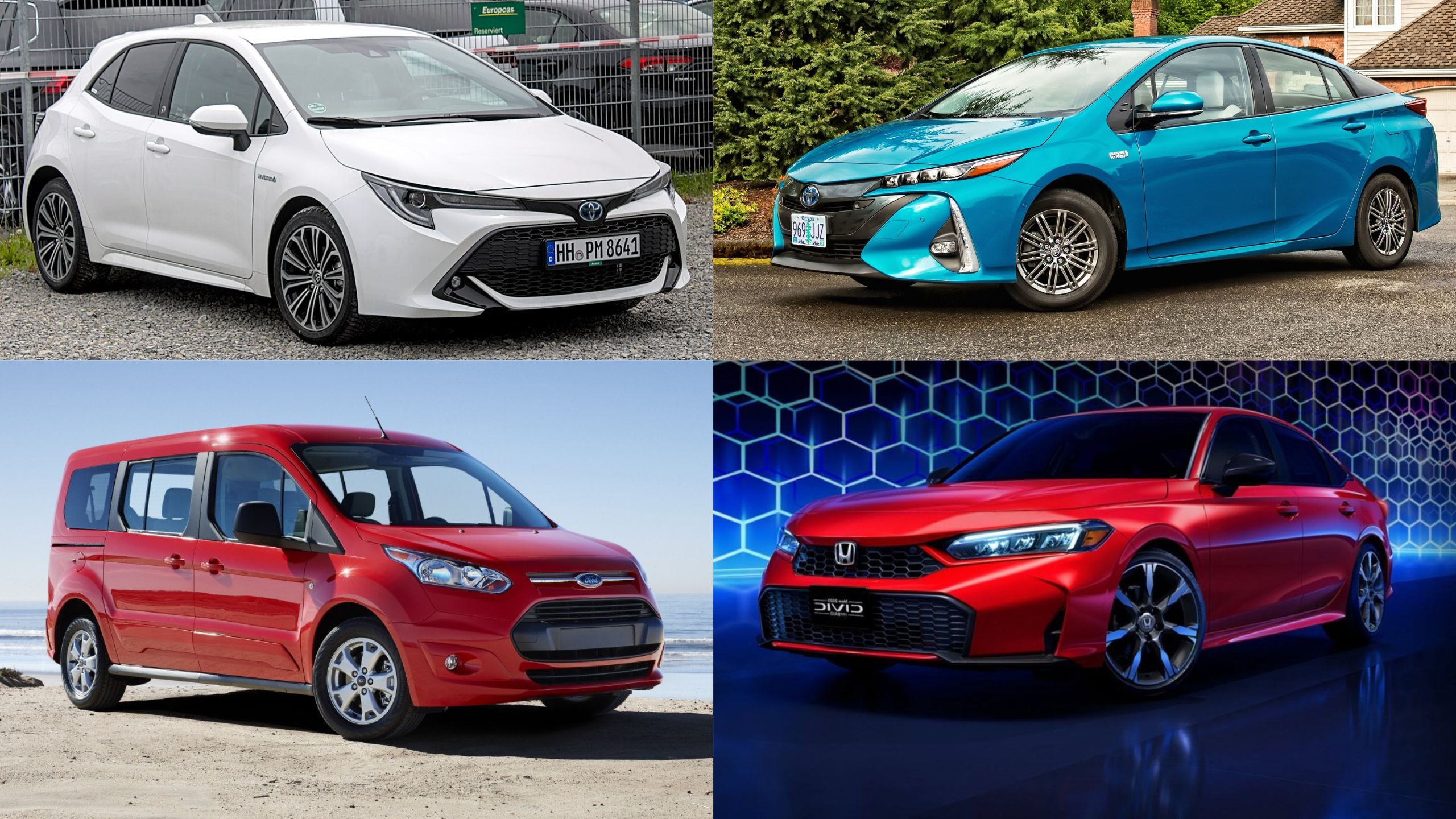The daily grind of delivery driving puts extraordinary demands on vehicles. From frequent stops and starts to high mileage accumulation, delivery cars must withstand the punishment that would wear down ordinary vehicles in record time.
The ideal delivery vehicle combines durability, fuel efficiency, cargo capacity, and reasonable maintenance costs.
Whether you’re delivering packages, food, or other goods, choosing the right vehicle can mean the difference between profitable operations and being constantly sidelined with repairs.
Today’s market offers numerous options designed to handle the rigors of delivery work across various price points and vehicle classes.
From economical compact cars to purpose-built vans, the right delivery vehicle needs to be a reliable partner that keeps going when others fail.
The following ten vehicles have proven themselves capable of enduring the challenges of daily delivery routes while providing the functionality and reliability that delivery drivers and fleet managers demand.
1. Toyota Corolla
The Toyota Corolla stands as a testament to reliability engineering in an affordable package, making it an excellent choice for delivery drivers seeking longevity without breaking the bank.
This compact sedan has earned its reputation through decades of consistent performance and bulletproof dependability.
The Corolla’s 1.8-liter four-cylinder engine strikes an ideal balance between fuel economy (averaging 31-33 mpg combined) and adequate power for urban delivery routes, while the hybrid variant pushes efficiency even further with 52 mpg combined ratings.
What truly distinguishes the Corolla in delivery work is its remarkably low maintenance requirements. The timing chain never needs replacement under normal conditions, and major components routinely last 250,000+ miles with basic care.
Oil changes extended to 10,000-mile intervals further reduce downtime. The compact dimensions make going through the tight city streets and parking in congested areas significantly easier, while the trunk provides surprising utility with 13.1 cubic feet of space – enough for multiple food delivery orders or several medium-sized packages.
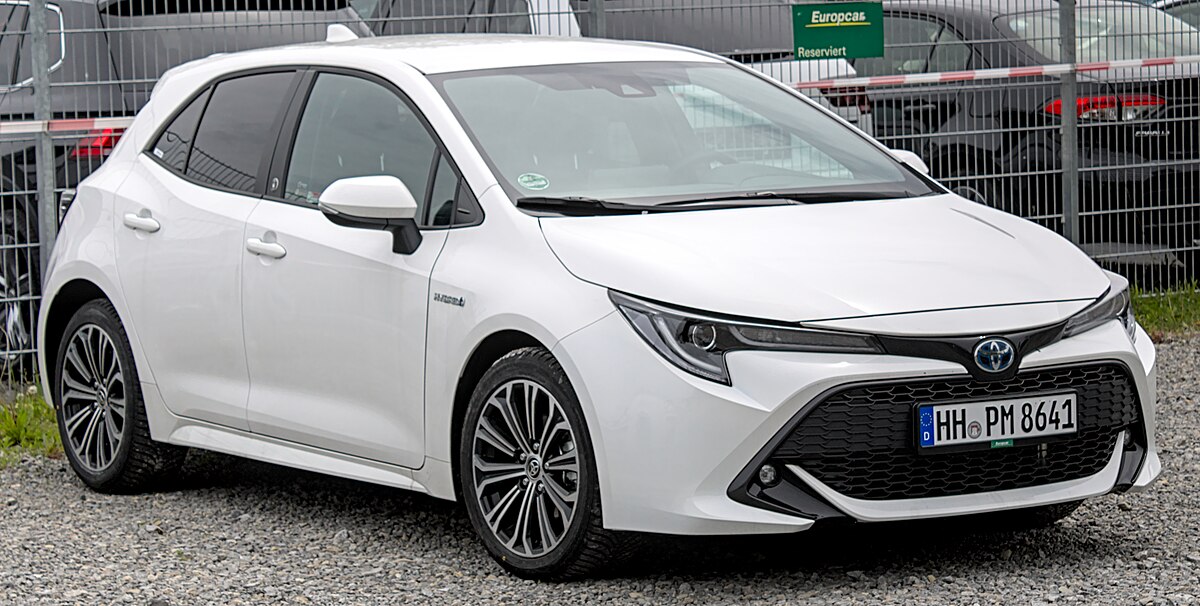
Toyota’s dedication to safety technology means even base models include pre-collision systems with pedestrian detection, lane departure alerts, and adaptive cruise control features that prove invaluable during long delivery shifts.
The interior layout prioritizes ergonomics with intuitive controls that minimize driver distraction, while comfortable seating reduces fatigue during extended hours behind the wheel.
Perhaps most compelling for delivery operators is the Corolla’s exceptional resale value, mitigating the total cost of ownership. Parts availability remains unmatched, with components readily accessible virtually anywhere.
While not designed specifically as a delivery vehicle, the Corolla’s legendary durability, outstanding fuel economy, and minimal maintenance requirements have made it a favorite among drivers who put thousands of miles on their vehicles monthly
For delivery operations prioritizing reliability and operating costs over maximum cargo capacity, the Corolla represents an optimal solution that will still be running smoothly long after many purpose-built delivery vehicles have retired.
2. Honda Civic
The Honda Civic has established itself as a delivery workhorse through a combination of engineering excellence and practical design that withstands the demands of continuous use.
This iconic compact car balances impressive fuel efficiency with enough interior space to make it versatile for various delivery applications.
The current generation Civic features a standard 2.0-liter four-cylinder engine delivering up to 36 mpg highway, while the available turbocharged 1.5-liter engine pushes efficiency even higher while providing additional torque for hillier routes or heavier loads.
What makes the Civic particularly well-suited for delivery work is its exceptionally durable continuously variable transmission (CVT) and engine combination that has proven reliable even under the stop-and-go punishment of delivery routes.
Honda’s attention to suspension tuning creates a platform that absorbs road imperfections while maintaining stability when fully loaded.
The cargo capacity impresses for its class, with the sedan offering 14.8 cubic feet of trunk space and the hatchback variant expanding to 24.5 cubic feet with rear seats up enough room for numerous delivery items without resorting to a larger vehicle class.
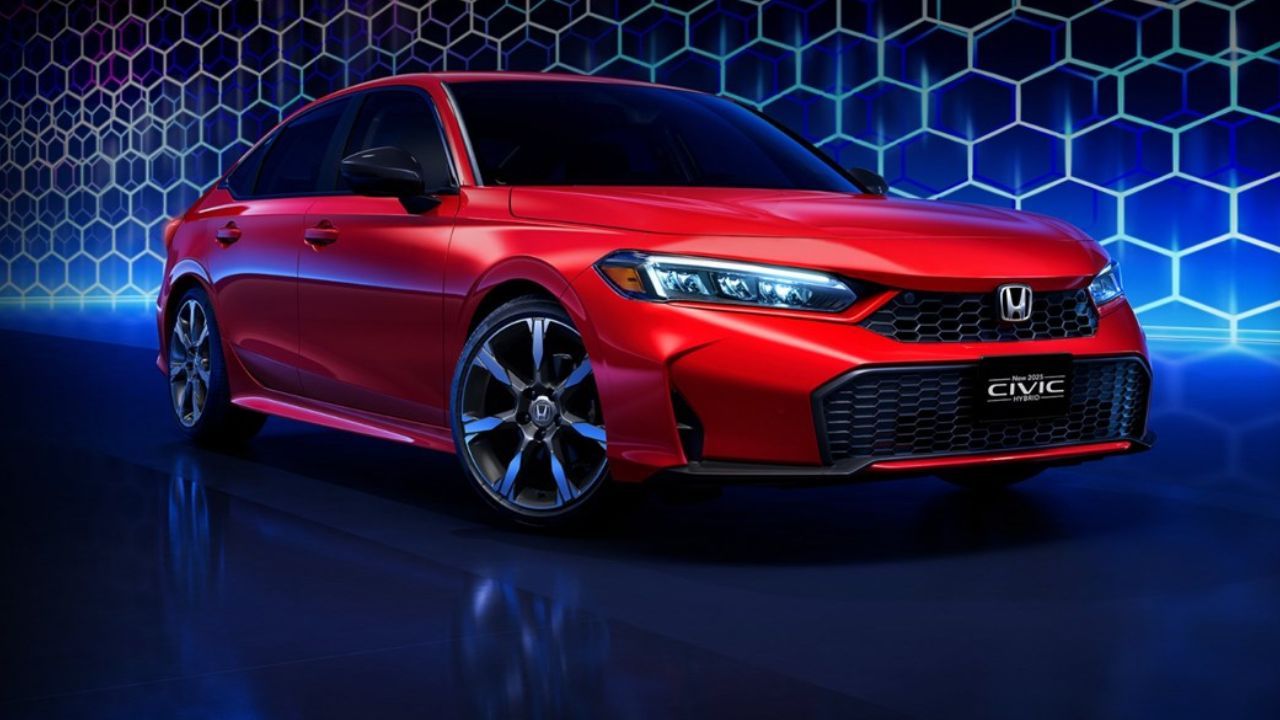
Maintenance simplicity contributes significantly to the Civic’s delivery appeal. Major service intervals are generous, and the design prioritizes accessibility for common maintenance tasks.
Honda’s parts network ensures that when service is required, downtime remains minimal. The cabin design focuses on driver comfort with supportive seats and intuitive controls that reduce fatigue during long delivery shifts.
Modern models include Honda Sensing safety technologies that provide valuable protection during the extended hours delivery drivers spend on the road.
The Civic’s reliability statistics speak volumes, with many examples surpassing 300,000 miles while requiring only routine maintenance.
This longevity transforms the already reasonable purchase price into an outstanding value proposition for delivery operations. A fuel tank capacity of 12.4 gallons combined with excellent efficiency creates a practical operating range that minimizes refueling stops during busy delivery days.
For drivers seeking a delivery vehicle that combines economy, durability, and reasonable cargo capacity without the bulk or expense of a dedicated delivery van, the Honda Civic represents an ideal solution that will continue performing reliably through years of demanding service.
3. Ford Transit Connect
The Ford Transit Connect stands as the quintessential purpose-built delivery vehicle, striking the perfect balance between compact maneuverability and serious cargo capacity.
This purpose-engineered van was designed specifically with commercial applications in mind, evident in every aspect of its construction.
The Transit Connect’s 2.0-liter four-cylinder engine delivers adequate power while maintaining respectable fuel economy ratings of approximately 24-26 mpg combined exceptional efficiency for a vehicle with such utility.
What truly distinguishes the Transit Connect in delivery applications is its configurable cargo area, offering up to 123.2 cubic feet of space in the long-wheelbase version.
The low load floor height significantly reduces strain during repeated loading/unloading cycles, while dual sliding side doors and 180-degree opening rear doors provide unparalleled access from multiple angles critical for efficient package organization and retrieval.
The cargo area’s near-vertical walls maximize usable space and accommodate aftermarket shelving systems that can be customized to specific delivery needs.
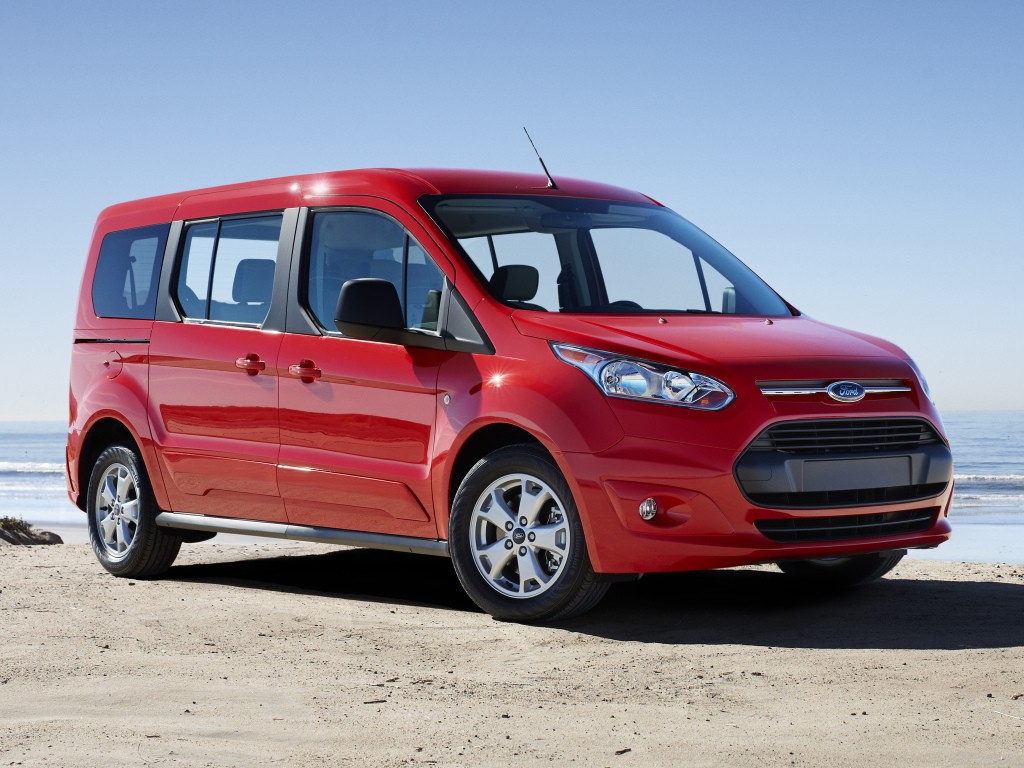
Ford engineered the Transit Connect with commercial durability as a priority. Heavy-duty components including a high-strength body structure, robust suspension systems, and commercial-grade brakes withstand the punishment of frequent stops.
Maintenance intervals are designed for high-mileage applications, with oil changes recommended every 10,000 miles under normal conditions. The driver’s compartment features practical touches like abundant storage, easy-clean surfaces, and ergonomic seating designed to remain comfortable during extended delivery shifts.
The Transit Connect’s compact exterior dimensions (just 190 inches long in standard-wheelbase form) enable it to go through tight urban environments and fit into parking spaces that would challenge larger delivery vans.
Available technology includes Ford’s SYNC system with optional navigation, backup cameras, and various driver assistance features that enhance safety during long delivery days. Fleet telematics compatibility allows businesses to monitor vehicle performance, location, and driver behavior.
Perhaps most compelling is Transit Connect’s established track record in delivery fleets worldwide, with many examples exceeding 250,000 miles in commercial service.
For delivery operations requiring more capacity than passenger cars can provide without the fuel consumption and maneuverability challenges of full-size vans, the Ford Transit Connect represents the optimal dedicated delivery solution combining purpose-built durability with practical efficiency.
4. Toyota Prius
The Toyota Prius has evolved from an eco-conscious statement to a delivery driver’s secret weapon through its unmatched combination of reliability, efficiency, and practical design.
This pioneering hybrid has become increasingly popular for delivery applications due to its remarkable fuel economy ratings of 54-58 mpg combined, dramatically reducing one of the most significant operating expenses in delivery work.
The Prius achieves this efficiency through its refined Hybrid Synergy Drive system, pairing a 1.8-liter Atkinson-cycle engine with electric motors in a configuration that has proven exceptionally durable even under demanding delivery conditions.
What makes the Prius particularly well-suited for delivery work extends beyond fuel savings. The liftback design provides 27.4 cubic feet of cargo space with the rear seats up (expanding to 50.7 cubic feet with seats folded), offering significantly more practical capacity than most sedans.
This space efficiently accommodates delivery items while the car’s exterior dimensions remain manageable for urban navigation and parking. The hatchback configuration with a wide opening and low load floor height makes package loading and retrieval remarkably convenient during frequent stops.
The Prius’s engineering contributes significantly to its delivery durability. The hybrid system reduces brake wear through regenerative braking, while the electric motor assistance reduces strain on the gasoline engine during the most demanding part of delivery driving acceleration from stops.
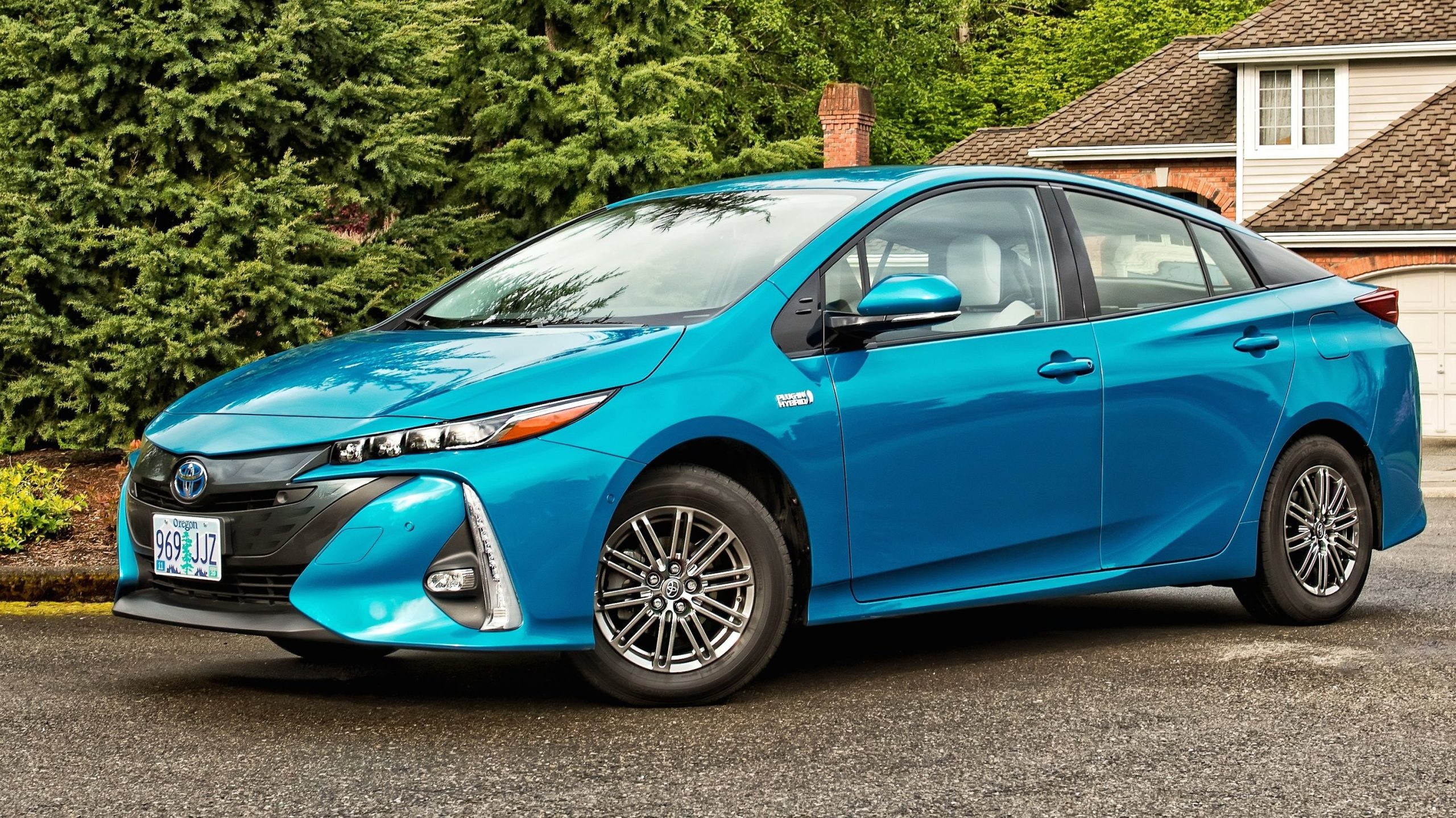
The continuously variable transmission eliminates traditional transmission wear points, contributing to documented examples of Prius taxis exceeding 500,000 miles with minimal major repairs.
Toyota’s commitment to battery durability means the hybrid battery typically lasts well beyond 150,000 miles, with affordable reconditioning options available when eventually needed.
Driver comfort features to benefit those spending long hours behind the wheel, including supportive seating, intuitive controls, and excellent visibility.
Modern Prius models include Toyota Safety Sense technologies that provide valuable protection during extended road time.
The cabin design includes practical storage areas useful for delivery-related items, while climate control systems operate efficiently even during frequent door openings.
For delivery operations seeking to maximize profitability through reduced operating costs, the Prius presents a compelling case.
The initial purchase premium over conventional vehicles is quickly offset by fuel savings and reduced maintenance requirements, particularly for high-mileage delivery applications.
As delivery services face increasing pressure to reduce environmental impact, the Prius also offers substantial emissions reductions without sacrificing the reliability and practicality essential to delivery operations.
Also Read: 12 Concept Cars That Showcase the Future of American Automobiles
5. RAM ProMaster City
The RAM ProMaster City stands as a purpose-built commercial workhorse that excels in demanding delivery applications through its thoughtful design and robust engineering.
This compact cargo van delivers an exceptional balance of capacity, durability, and economy that makes it ideal for businesses requiring more space than passenger vehicles provide without the unwieldy dimensions of full-size vans.
Powered by a 2.4-liter Tigershark MultiAir engine producing 178 horsepower and 174 lb-ft of torque, the ProMaster City offers ample power for urban and highway delivery routes while maintaining respectable fuel economy ratings of 21 city/28 highway mpg.
What truly distinguishes the ProMaster City in delivery applications is its cargo configuration. The cavernous rear compartment provides 131.7 cubic feet of cargo volume with nearly vertical walls that maximize usable space and facilitate the installation of custom shelving systems.
The impressive 1,883-pound payload capacity handles substantial delivery loads without strain.
Access to this cargo area comes through 60/40 split rear doors that open to a remarkable 180 degrees for unobstructed loading, while an available sliding door on each side allows efficient curbside access regardless of parking orientation a crucial advantage during busy delivery schedules.
RAM engineered the ProMaster City specifically for commercial durability. The front-wheel-drive configuration improves traction in adverse conditions while eliminating driveshaft components that would require maintenance.
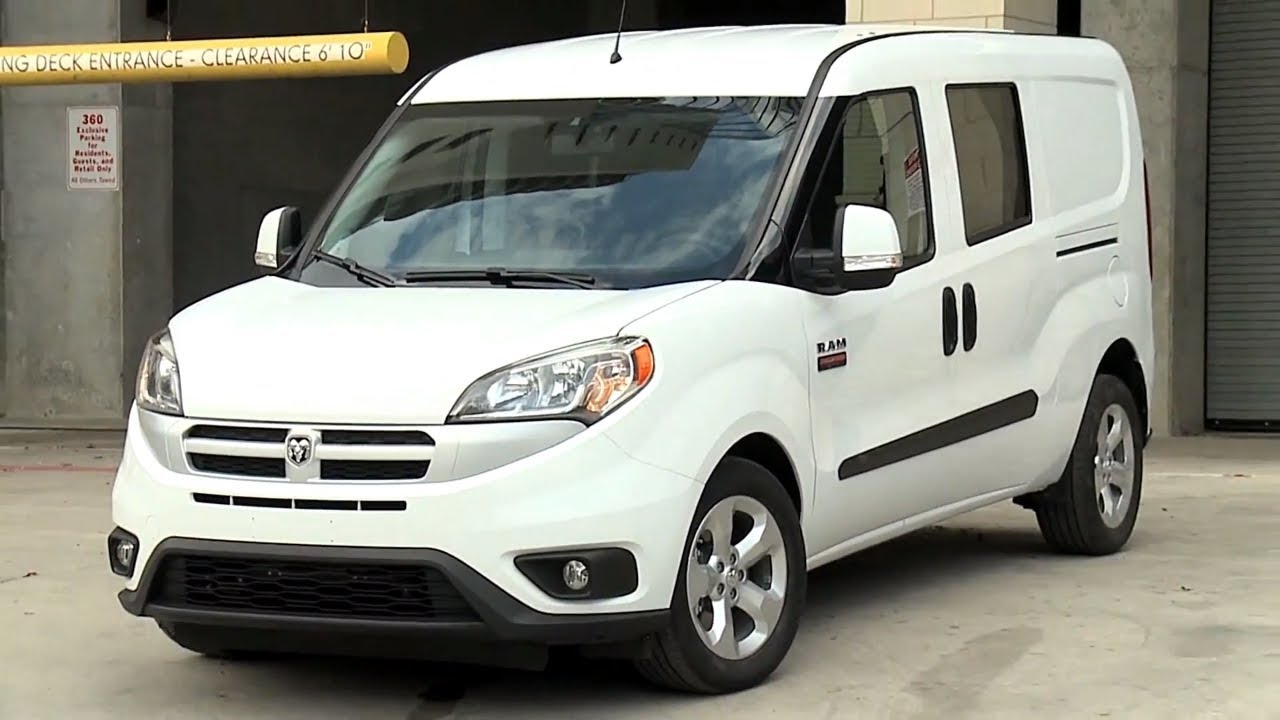
The nine-speed automatic transmission offers both responsive acceleration and efficient highway cruising. The suspension system balances load-carrying capability with ride quality, incorporating independent front suspension with MacPherson struts and a bi-link rear suspension tuned specifically for commercial applications.
Inside the cabin, the ProMaster City prioritizes driver comfort and practicality with features targeting professionals who spend extended hours behind the wheel. The raised seating position provides excellent visibility, while abundant storage includes oversized door pockets, dashboard compartments, and overhead storage.
The cabin’s dimensions accommodate taller drivers comfortably, and controls are positioned for intuitive operation during busy delivery routes.
Maintenance considerations further enhance ProMaster City’s appeal for delivery operations. Oil change intervals extend to 10,000 miles, while the timing chain eliminates the need for costly timing belt replacement.
The straightforward mechanical design facilitates efficient servicing, and parts availability through RAM’s commercial network minimizes downtime.
For delivery businesses seeking a dedicated delivery solution with exceptional cargo capacity, commercial-grade durability, and reasonable operating costs, the RAM ProMaster City represents an ideal purpose-built option that will withstand years of demanding delivery service.
6. Subaru Outback
The Subaru Outback has established itself as a uniquely capable delivery vehicle through its exceptional combination of all-weather capability, cargo versatility, and legendary durability.
This wagon-crossover hybrid offers delivery drivers a compelling alternative to traditional vans with its 32.5 cubic feet of cargo capacity behind the rear seats (expanding to 75.7 cubic feet with seats folded) space comparable to many small SUVs but with more efficient packaging.
The Outback’s standard symmetrical all-wheel drive system provides crucial traction during adverse weather conditions, ensuring delivery schedules remain uninterrupted when competitors might be sidelined.
What makes the Outback particularly well-suited for delivery work is its intelligent blend of car-like handling with utility vehicle capability.
The 8.7 inches of ground clearance go through unpaved roads, rutted driveways, and winter accumulation without issue, while the relatively low roof height compared to SUVs facilitates loading items on optional roof racks when necessary.
The horizontally-opposed “boxer” engine design lowers the center of gravity, contributing to stable handling even when the cargo area is fully loaded with delivery items.
Subaru’s engineering focus on longevity manifests in the Outback’s exceptional durability statistics. The standard 2.5-liter four-cylinder engine routinely exceeds 200,000 miles with basic maintenance, while the available 2.4-liter turbocharged option provides additional power for hilly routes or heavier loads.
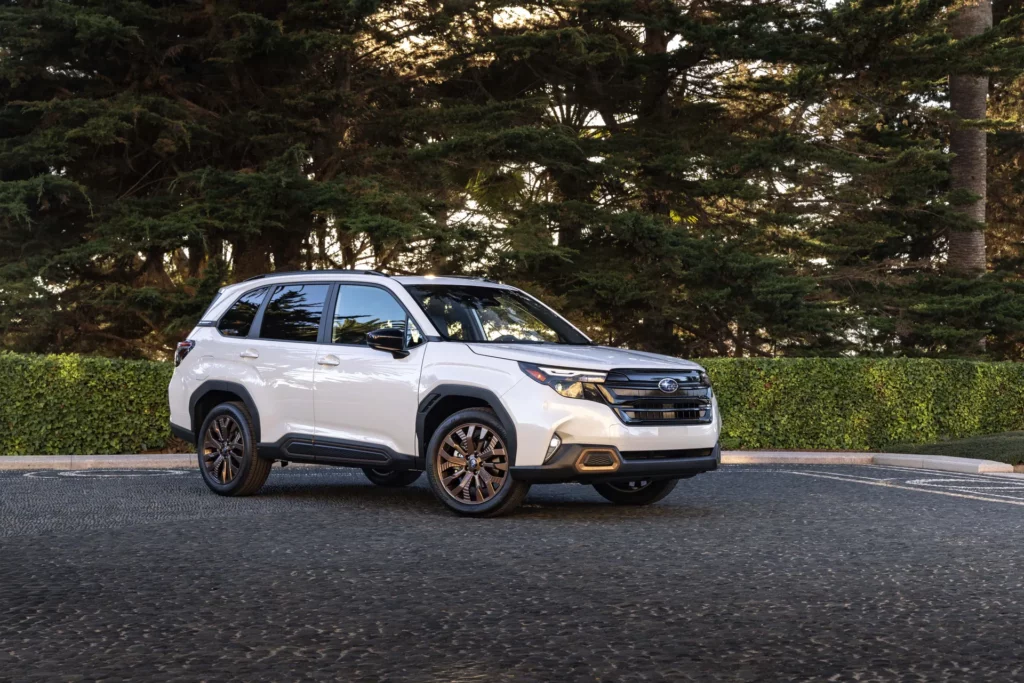
The continuously variable transmission (CVT) in modern Outbacks has demonstrated remarkable reliability under high-mileage conditions.
Maintenance intervals are reasonable with oil changes recommended every 6,000 miles, though many delivery operators opt for synthetic oil to extend this to 10,000 miles.
The Outback’s cabin prioritizes driver comfort during long delivery shifts with supportive seating, intuitive controls, and excellent outward visibility.
The standard Subaru EyeSight driver assistance system provides valuable safety features including adaptive cruise control, lane-keeping assistance, and pre-collision braking particularly beneficial during extended hours behind the wheel.
The infotainment system includes standard Apple CarPlay and Android Auto integration, facilitating efficient navigation and communication essential for delivery operations.
Fuel efficiency remains competitive at 26-29 mpg combined depending on engine choice particularly impressive considering the standard all-wheel drive system.
The 18.5-gallon fuel tank provides an extensive range between fill-ups, maximizing productive delivery time.
For delivery operations serving areas with variable terrain, weather challenges, or requiring more versatile cargo configurations than traditional delivery vehicles offer, the Subaru Outback represents an ideal solution combining all-weather capability with proven reliability that will continue performing through years of demanding delivery service.
7. Nissan NV200
The Nissan NV200 compact cargo van has earned its reputation as a delivery workhorse through thoughtful design specifically targeting the needs of commercial operators.
This purpose-built delivery vehicle strikes an ideal balance between maneuverability, cargo capacity, and operating economy which makes it particularly well-suited for urban and suburban delivery applications.
Powered by a 2.0-liter four-cylinder engine producing 131 horsepower, the NV200 delivers adequate performance while achieving impressive fuel economy ratings of 24 city/26 highway mpg exceptional efficiency for a dedicated cargo vehicle.
What distinguishes the NV200 in delivery applications is its cargo area design optimized for practical utility.
The 122.7 cubic feet of cargo volume comes with a low load floor height of just 21.1 inches, significantly reducing strain during repeated loading/unloading cycles throughout delivery routes.
The 40/60-split rear doors open to 180 degrees, allowing forklift loading when necessary while providing unobstructed access to the cargo area.
A sliding door on each side facilitates efficient curbside access regardless of parking orientation a crucial advantage during busy delivery schedules in congested areas.
Nissan engineered the NV200 with commercial durability as a primary consideration. The body structure utilizes reinforcement in high-stress areas, while the suspension system balances load capacity with ride quality.
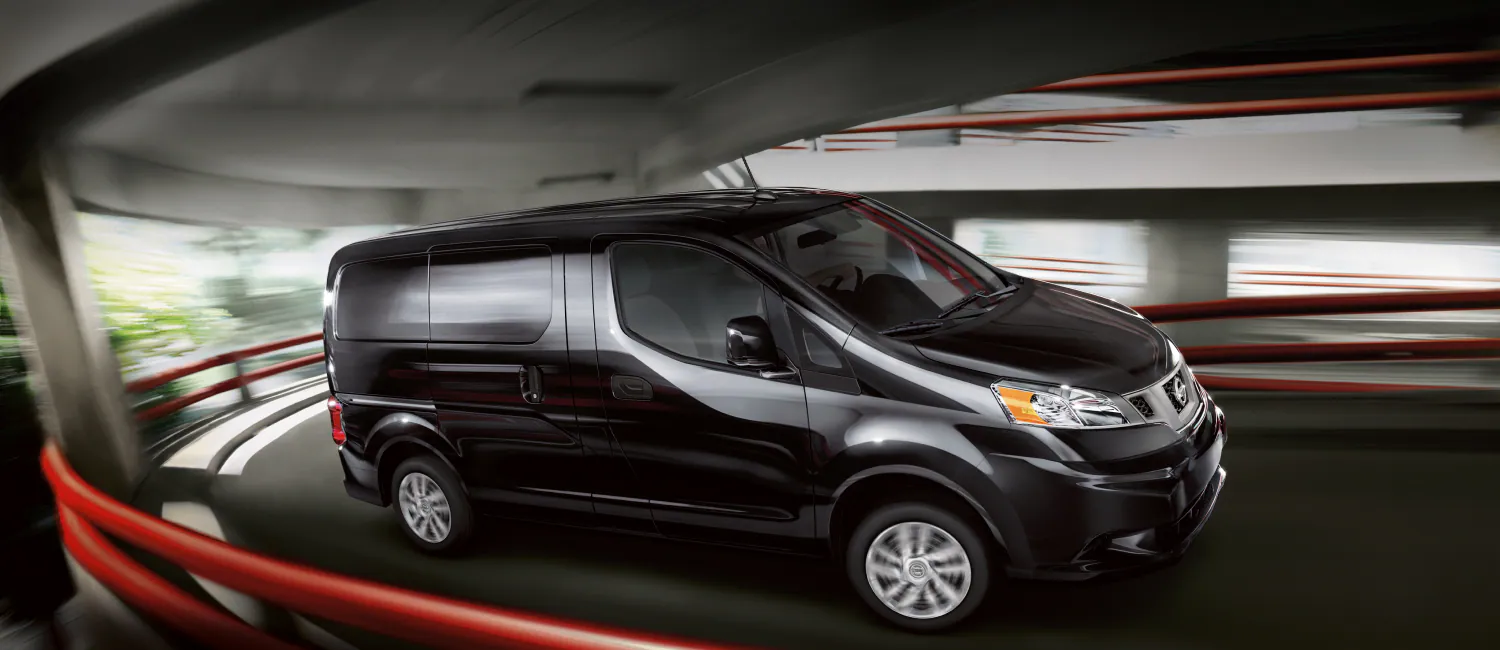
The continuously variable transmission (CVT) eliminates traditional shift points, reducing wear during the frequent acceleration cycles inherent in delivery work.
Maintenance intervals are designed for commercial applications, with oil changes recommended every 5,000-7,500 miles depending on operating conditions.
The straightforward mechanical systems prioritize reliability over complexity, contributing to reduced downtime.
The driver’s compartment focuses on practical functionality for professionals spending extended hours behind the wheel. The raised seating position provides excellent visibility, crucial for going through congested delivery areas.
The cabin includes multiple storage compartments for delivery-related items, including a center console designed to accommodate hanging file folders – perfect for delivery documentation. The fold-flat passenger seat transforms into a work surface when needed for paperwork completion between deliveries.
With an length of just 186.3 inches and a tight turning radius of 36.7 feet, the NV200 goes through urban environments and parking challenges with car-like maneuverability despite its substantial cargo capacity.
This compact footprint makes it ideal for delivery operations in congested areas where larger vans would prove problematic.
For businesses seeking a dedicated delivery solution balancing purpose-built utility with reasonable acquisition and operating costs, the Nissan NV200 represents an optimal choice that will withstand the demands of daily delivery routes while providing the functionality commercial operators require.
8. Chevrolet Bolt EV
The Chevrolet Bolt EV has emerged as a revolutionary option for delivery operations, combining exceptional operating economy with surprising practicality that defies its compact exterior dimensions.
This purpose-built electric vehicle offers delivery drivers an unprecedented 259 miles of EPA-estimated range on a single charge, eliminating range anxiety for most daily delivery routes while dramatically reducing operating costs.
The Bolt’s electric powertrain delivers instant torque of 266 lb-ft, providing responsive acceleration crucial for merging and going through the traffic during busy delivery schedules.
What makes the Bolt particularly well-suited for delivery applications extends beyond its zero-emission credentials. The thoughtfully designed interior provides 16.9 cubic feet of cargo space with rear seats up expanding to an impressive 57 cubic feet with seats folded. This capacity rivals many small crossovers despite the Bolt’s compact footprint.
The flat load floor and wide-opening hatch facilitate efficient loading and organization of delivery items, while the absence of a transmission tunnel maximizes interior space utility.
The electric powertrain offers substantial advantages specific to delivery applications. The regenerative braking system recaptures energy during the frequent deceleration inherent in delivery routes, extending range while dramatically reducing brake wear – a significant maintenance expense for traditional delivery vehicles.
The simplified powertrain eliminates numerous maintenance requirements including oil changes, transmission service, and exhaust system repairs. This reduced maintenance profile translates to minimal downtime and lower operating costs over the vehicle’s lifespan.
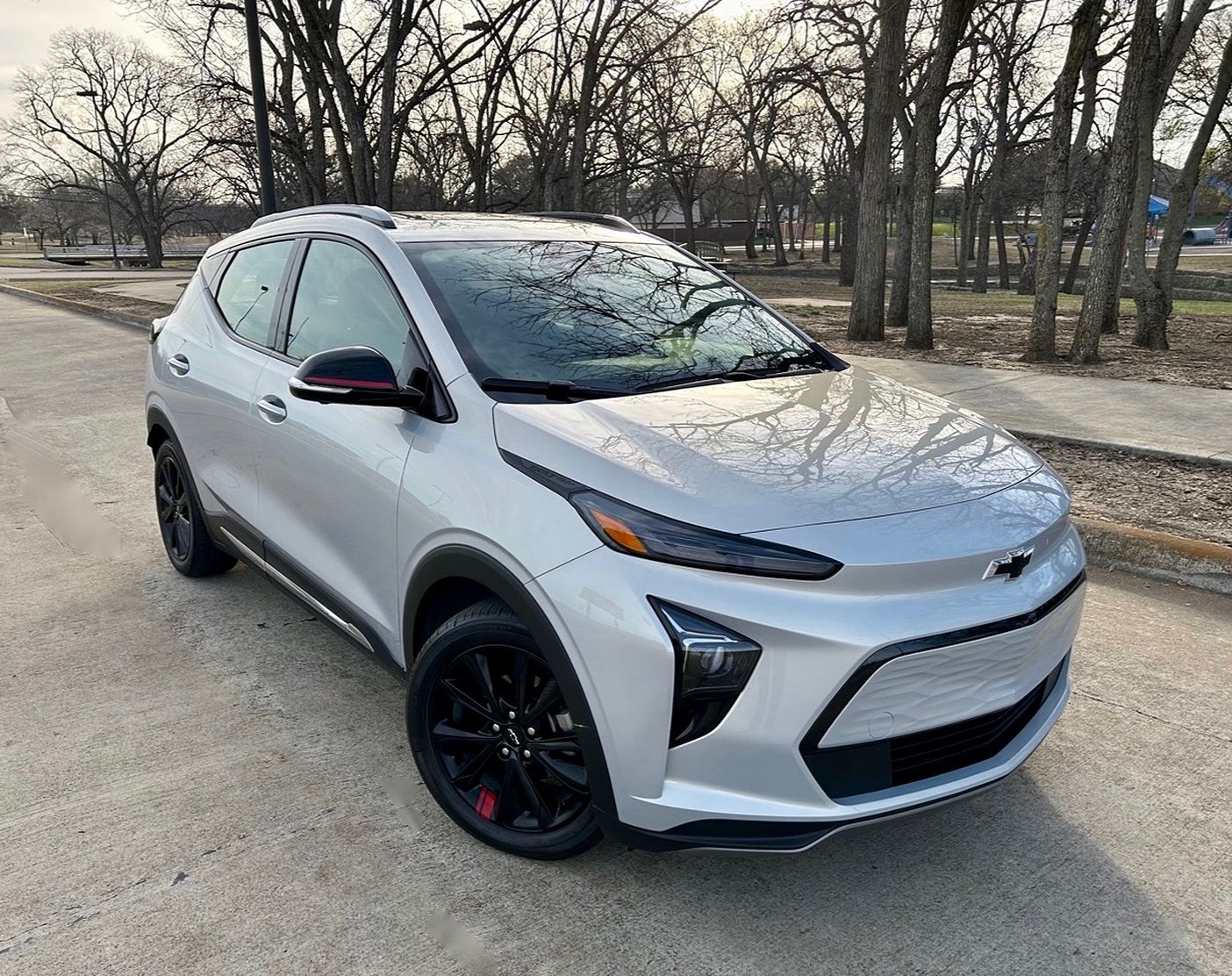
Chevrolet engineered the Bolt with longevity in mind, backing the battery with an 8-year/100,000-mile warranty that assures delivery operators.
The liquid-cooled battery management system maintains optimal operating temperatures, contributing to battery longevity even under demanding delivery conditions.
The DC fast-charging capability allows recovering approximately 100 miles of range in 30 minutes when necessary, though most delivery operations find overnight Level 2 charging perfectly adequate for daily routes.
The driver-focused cabin includes intuitive controls, excellent visibility, and comfortable seating designed for extended use.
The available driver assistance features to benefit those spending long hours behind the wheel, while the infotainment system provides seamless integration with delivery management applications.
The one-pedal driving mode reduces fatigue during stop-and-go delivery routes by allowing drivers to control both acceleration and deceleration primarily through the accelerator pedal.
For delivery operations prioritizing the total cost of ownership and seeking to reduce environmental impact, the Chevrolet Bolt represents a compelling option.
The higher acquisition cost compared to conventional vehicles is offset by dramatically lower operating expenses typically 60-70% less per mile than gasoline alternatives.
For delivery routes within its substantial range capability, the Bolt provides exceptional durability through mechanical simplicity while delivering the reliability and utility essential for demanding delivery applications.
9. Kia Soul
The Kia Soul has earned a dedicated following among delivery drivers through its deceptively spacious interior, exceptional reliability record, and competitive operating costs.
This distinctive compact crossover combines the maneuverability of a small car with cargo capacity that rivals much larger vehicles, creating an ideal platform for delivery operations that don’t require a dedicated commercial vehicle.
The Soul’s boxy design maximizes interior space efficiency, providing 24.2 cubic feet behind the rear seats expandable to an impressive 62.1 cubic feet with seats folded dimensions that accommodate substantial delivery loads while maintaining a compact 165.2-inch length perfect for urban navigation.
What distinguishes the Soul for delivery applications is its thoughtful practicality. The wide-opening rear hatch and low load floor height reduce strain during frequent loading/unloading cycles, while the square cargo area efficiently accommodates boxed deliveries without wasted space.
The 60/40 split rear seats provide flexible configurations for varying delivery needs. The Soul’s raised seating position offers excellent visibility critical for going through congested delivery areas and identifying addresses, while the tight turning radius facilitates maneuvering in limited-access locations.
Kia engineered the Soul with longevity as a priority, evident in its consistently high reliability ratings across multiple independent assessments.
The standard 2.0-liter four-cylinder engine delivers adequate performance with 147 horsepower while achieving approximately 30 mpg combined.
The continuously variable automatic transmission (IVT) in current models has demonstrated excellent durability under high-mileage conditions.
For delivery routes in challenging terrain, the available 1.6-liter turbocharged engine provides substantial additional torque while maintaining reasonable efficiency.
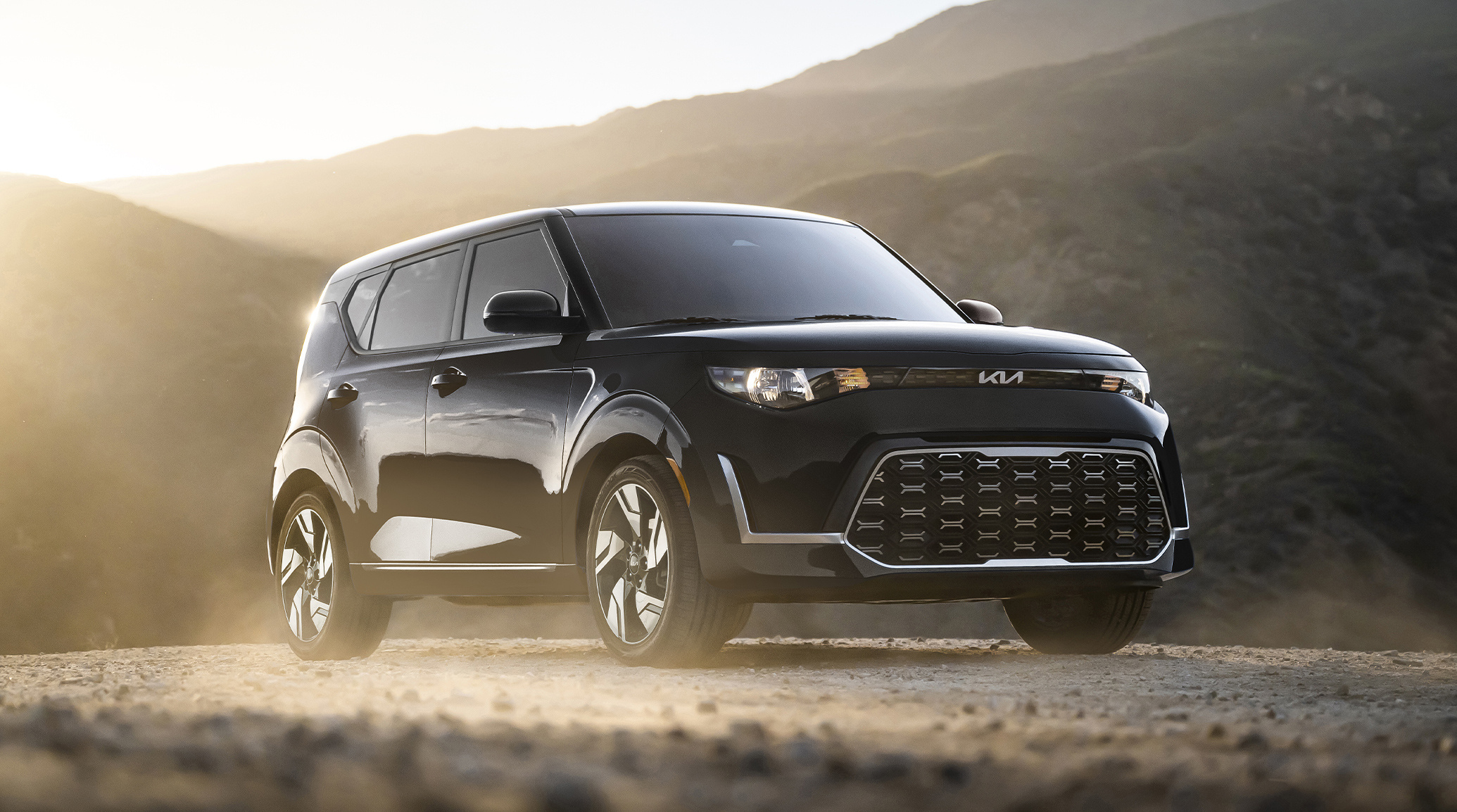
Maintenance requirements remain straightforward, with oil changes recommended every 7,500-10,000 miles depending on operating conditions. The timing chain design eliminates costly timing belt replacement intervals.
Kia’s exceptional warranty coverage including the 10-year/100,000-mile powertrain protection provides valuable peace of mind for delivery operators putting substantial mileage on their vehicles. Simplified mechanical systems prioritize reliability over complexity, contributing to reduced downtime.
The Soul’s cabin focuses on driver comfort during extended hours behind the wheel with supportive seating, intuitive controls, and numerous storage compartments for delivery-related items.
Modern models include advanced safety features like forward collision avoidance, lane keeping assistance, and driver attention warning – particularly valuable during long delivery shifts.
The infotainment system with standard Apple CarPlay and Android Auto integration facilitates efficient navigation essential for delivery operations.
For delivery businesses seeking a versatile platform that balances cargo capacity with operating economy and acquisition cost, the Kia Soul represents an optimal choice that has been validated through extensive real-world use in delivery fleets.
The combination of surprising utility, established reliability, and reasonable operating costs makes the Soul a standout option that will withstand the demands of daily delivery routes while providing functionality that exceeds expectations for its compact dimensions.
10. Ford Maverick Hybrid
The Ford Maverick Hybrid represents a revolutionary approach to delivery operations, combining pickup truck utility with compact car efficiency in a package perfectly suited for modern delivery demands.
This innovative vehicle defies traditional categories through its unibody construction and a standard hybrid powertrain that achieves an EPA-estimated 42 mpg city extraordinary efficiency for a vehicle offering genuine utility.
The Maverick’s 2.5-liter Atkinson-cycle hybrid system produces a combined 191 horsepower, delivering responsive performance while dramatically reducing fuel costs compared to traditional delivery options.
What makes the Maverick particularly compelling for delivery applications is its versatile configuration.
The 4.5-foot bed provides 33.3 cubic feet of weatherproof cargo space that accommodates larger deliveries while the FLEXBED system incorporates adjustable tie-downs, integrated power outlets, and multiple organization options.
This bed design allows secure transportation of items that would challenge enclosed vehicles, while the available tonneau cover provides security for valuable deliveries. The crew cab configuration seats five when needed but can accommodate additional interior cargo when the rear seats are folded.
Ford engineered the Maverick specifically for durability in demanding applications. The hybrid system reduces strain through electric motor assistance during the most stressful part of delivery driving acceleration from stops. The electronic continuously variable transmission (eCVT) eliminates traditional transmission wear points.
The regenerative braking system reduces brake component wear while capturing energy during frequent deceleration inherent in delivery routes. These systems contribute to projected long-term reliability that aligns perfectly with commercial applications requiring high mileage accumulation.
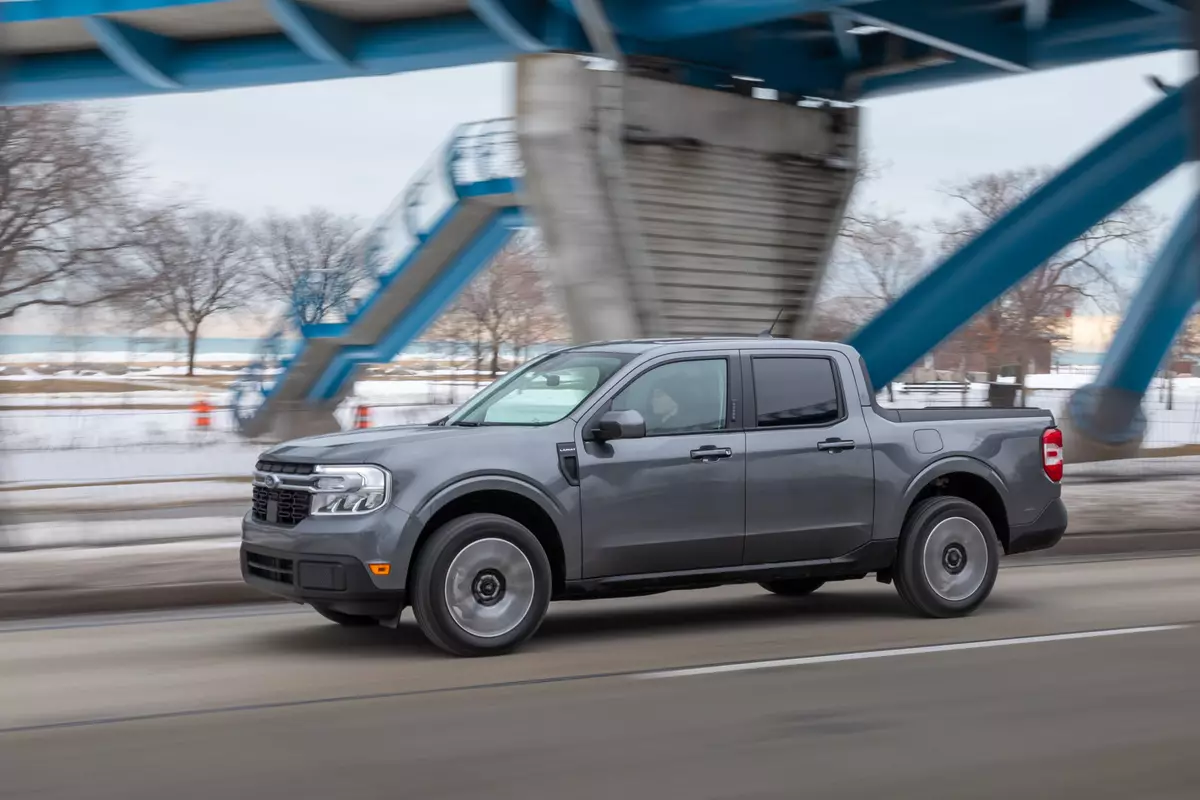
The Maverick’s compact dimensions and car-like handling characteristics prove invaluable during urban delivery operations.
At just 199.7 inches in length shorter than many midsize sedans the Maverick goes through the tight city streets and parking challenges with surprising agility despite its utility.
The 40-foot turning radius facilitates maneuvering in congested delivery areas, while the standard rear-view camera assists with precise positioning during frequent parking maneuvers.
Inside the cabin, the Maverick prioritizes functionality with durable materials, practical storage solutions, and intuitive controls.
The available 8-inch touchscreen incorporates Apple CarPlay and Android Auto connectivity, facilitating navigation and communication essential for delivery operations.
The FITS (Ford Integrated Tether System) allows the installation of various accessories including additional storage options, device holders, and organizational tools that can be customized to specific delivery requirements.
For delivery operations seeking versatility beyond what traditional cars or vans provide without the fuel consumption and maneuverability challenges of full-size trucks, the Ford Maverick Hybrid represents an ideal solution.
The unprecedented combination of efficiency, utility, and manageable dimensions creates a compelling option for delivery businesses to prioritize operating costs while requiring flexibility for diverse delivery applications.
Early reliability data suggests the Maverick will withstand the demanding conditions of daily delivery routes while providing functionality that transforms delivery operations.
Also Read: 10 Upcoming Electric Trucks That Will Revolutionize the Market

